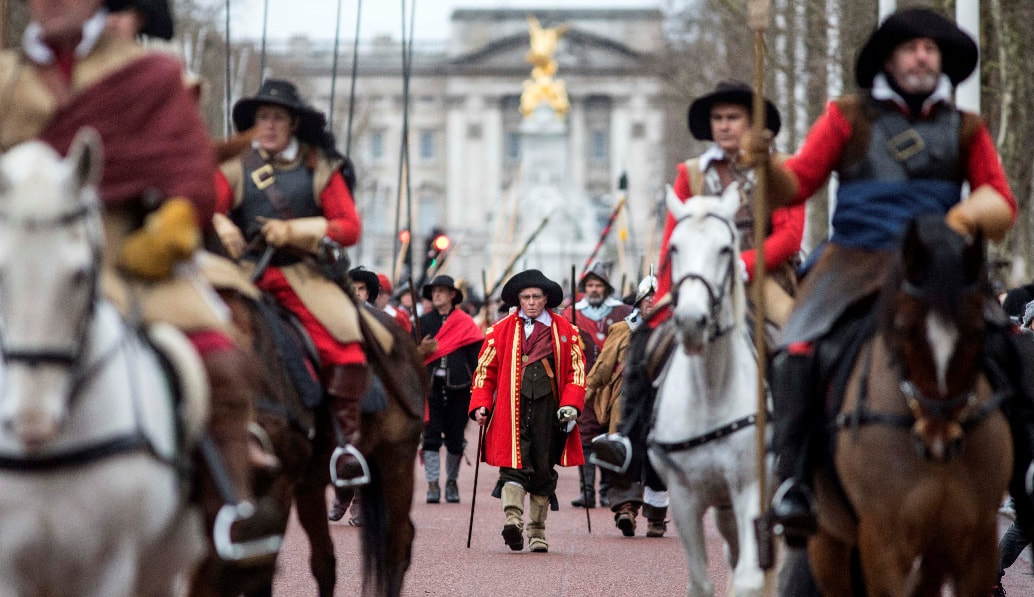|
How it Happened
Following the end of the Second Civil War in 1648, the more fanatical elements in the Parliamentary party wished to bring the King to ‘Justice’. Unable to achieve this through Parliament, who still wished for a negotiated peace, the Army took matters into their own hands and on 6 December 1648 Colonel Pride’s Regiment stood at the doors to the House and would only allow in their own supporters. Forty five leading Parliamentarians including Sir William Waller were imprisoned, 146 excluded and 75 allowed in. Now with a majority they proceeded to bring the King to a ‘High Court of Justice’. Due to its illegality the judges and law officials would have nothing to do with it. So the Rump Parliament appointed 135 Commissioners to the High Court of Justice, but only 68 would eventually sit in judgement. The King had no legal representative and was entirely on his own in the court set up in Westminster Hall. He conquered his stammer and gave an eloquent defence to what we would call today a ‘kangaroo court’. Despite public interruptions on the King’s behalf, including one by Fairfax’s wife, and even his guards saying “God bless your Majestie”, the outcome was a foregone conclusion, and the King was to be put to death. He was lodged in St James’s Palace whilst a scaffold was erected at the Banqueting House. During this period he was able to say goodbye to his children Princess Elizabeth and Henry Duke of Gloucester who had been held in captivity by Parliament. |
The Fateful Day
He was lodged in St James’s Palace whilst a scaffold was erected at the Banqueting House. During this period he was able to say goodbye to his children Princess Elizabeth and Henry Duke of Gloucester who had been held in captivity by Parliament. However, on the day of his death (30 January 1649 (new style)) there was a long delay as it was realised that an Act had to be rushed through the purged Parliament, making it illegal to proclaim a new king, otherwise his son would have become King by right of succession. Access to the scaffold was made through a window in the brick building adjoining the Banqueting House at that time. Its position is now marked by a bust of King Charles in the stone extension to the original Banqueting House added after the fire which destroyed the rest of the old Tudor Palace of Westminster. Famously wearing two shirts on the cold day so that he would not shiver and appear frightened, the King was put to death at 2.00 pm. The King’s Army official policy is never to refer to it as an execution as this infers a legal act, which this was not. |
